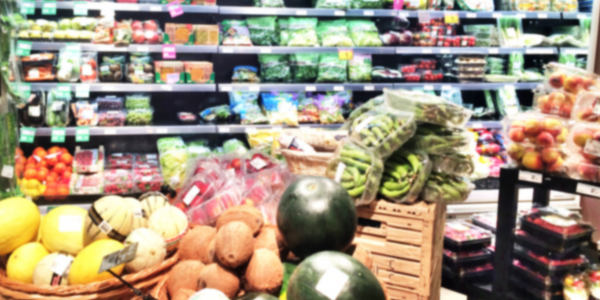With Dynamics 365, Natura imbues its service with robustness and tightens its relationship with its customers

Customer Company Size
Large Corporate
Region
- America
- Europe
Country
- Brazil
Product
- Azure
- Dynamics 365 Customer Service
- Microsoft Teams
Tech Stack
- SaaS
- Cloud-based applications
- AI-driven insights
Implementation Scale
- Enterprise-wide Deployment
Impact Metrics
- Productivity Improvements
- Customer Satisfaction
- Digital Expertise
Technology Category
- Platform as a Service (PaaS) - Data Management Platforms
- Analytics & Modeling - Predictive Analytics
- Application Infrastructure & Middleware - API Integration & Management
Applicable Industries
- Retail
Applicable Functions
- Business Operation
- Sales & Marketing
Use Cases
- Process Control & Optimization
- Remote Collaboration
Services
- Cloud Planning, Design & Implementation Services
- System Integration
- Training
About The Customer
Natura is a prominent Brazilian cosmetics multinational founded in 1969 in São Paulo. It has grown from a small factory to the largest Brazilian cosmetics company with a presence in seven Latin American countries, as well as France and the United States. Natura employs 7,000 people and has a network of 1.7 million consultants, serving approximately 100 million consumers. The company is known for its commitment to well-being, environmental, economic, and social awareness, and its philosophy emphasizes harmonious relationships with individuals, others, and nature. Innovation is a core part of Natura's DNA, and the company continuously seeks to enhance its customer service and strengthen its relationship with customers and consultants.
The Challenge
Natura, a leading Brazilian cosmetics multinational, faced the challenge of developing a robust customer service system that could integrate with its legacy platforms while providing higher availability and flexibility for future solutions. The company needed a centralized service system that could simplify the development of future processes and enhance its relationship with customers and consultants. The existing system required improvements in productivity and efficiency, and Natura sought a solution that could address these needs while maintaining its commitment to environmental, economic, and social awareness.
The Solution
Natura partnered with Microsoft, Accenture, and Avanade to develop a new service system based on Dynamics 365 Customer Service. This centralized single-channel service integrated with Natura's legacy platforms, providing a robust system that simplified the development of future processes. The solution included a chatbot, 'Nat,' which represented the company's culture and enhanced the connection with consultants. Dynamics 365 offered a comprehensive view of the organization, real-time insights, and AI-driven predictive capabilities. The platform was customized with Azure, Microsoft's Cloud platform, to meet Natura's industry-specific needs. The deployment was conducted remotely via Microsoft Teams, involving extensive training and testing to ensure a seamless transition.
Operational Impact
Quantitative Benefit

Case Study missing?
Start adding your own!
Register with your work email and create a new case study profile for your business.
Related Case Studies.

Case Study
Improving Production Line Efficiency with Ethernet Micro RTU Controller
Moxa was asked to provide a connectivity solution for one of the world's leading cosmetics companies. This multinational corporation, with retail presence in 130 countries, 23 global braches, and over 66,000 employees, sought to improve the efficiency of their production process by migrating from manual monitoring to an automatic productivity monitoring system. The production line was being monitored by ABB Real-TPI, a factory information system that offers data collection and analysis to improve plant efficiency. Due to software limitations, the customer needed an OPC server and a corresponding I/O solution to collect data from additional sensor devices for the Real-TPI system. The goal is to enable the factory information system to more thoroughly collect data from every corner of the production line. This will improve its ability to measure Overall Equipment Effectiveness (OEE) and translate into increased production efficiencies. System Requirements • Instant status updates while still consuming minimal bandwidth to relieve strain on limited factory networks • Interoperable with ABB Real-TPI • Small form factor appropriate for deployment where space is scarce • Remote software management and configuration to simplify operations

Case Study
Digital Retail Security Solutions
Sennco wanted to help its retail customers increase sales and profits by developing an innovative alarm system as opposed to conventional connected alarms that are permanently tethered to display products. These traditional security systems were cumbersome and intrusive to the customer shopping experience. Additionally, they provided no useful data or analytics.

Case Study
How Sirqul’s IoT Platform is Crafting Carrefour’s New In-Store Experiences
Carrefour Taiwan’s goal is to be completely digital by end of 2018. Out-dated manual methods for analysis and assumptions limited Carrefour’s ability to change the customer experience and were void of real-time decision-making capabilities. Rather than relying solely on sales data, assumptions, and disparate systems, Carrefour Taiwan’s CEO led an initiative to find a connected IoT solution that could give the team the ability to make real-time changes and more informed decisions. Prior to implementing, Carrefour struggled to address their conversion rates and did not have the proper insights into the customer decision-making process nor how to make an immediate impact without losing customer confidence.

Case Study
Ensures Cold Milk in Your Supermarket
As of 2014, AK-Centralen has over 1,500 Danish supermarkets equipped, and utilizes 16 operators, and is open 24 hours a day, 365 days a year. AK-Centralen needed the ability to monitor the cooling alarms from around the country, 24 hours a day, 365 days a year. Each and every time the door to a milk cooler or a freezer does not close properly, an alarm goes off on a computer screen in a control building in southwestern Odense. This type of alarm will go off approximately 140,000 times per year, equating to roughly 400 alarms in a 24-hour period. Should an alarm go off, then there is only a limited amount of time to act before dairy products or frozen pizza must be disposed of, and this type of waste can quickly start to cost a supermarket a great deal of money.

Case Study
Supermarket Energy Savings
The client had previously deployed a one-meter-per-store monitoring program. Given the manner in which energy consumption changes with external temperature, hour of the day, day of week and month of year, a single meter solution lacked the ability to detect the difference between a true problem and a changing store environment. Most importantly, a single meter solution could never identify root cause of energy consumption changes. This approach never reduced the number of truck-rolls or man-hours required to find and resolve issues.







